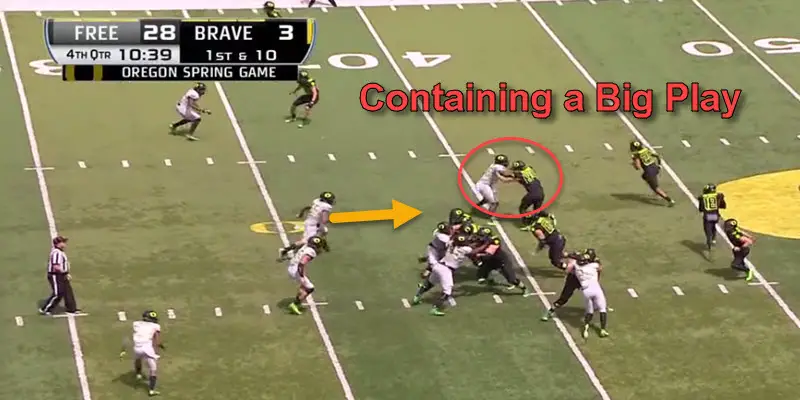It is always fun to have a “Skull Session” with the Grizzled Ol’ Coach of FishDuck.com, my favorite, Coach Mike Morris. But this time he came with a notebook where he studied every play of the Oregon Spring Game and had some fun analysis themes to reveal over the spring and summer; but where do you start? There is so much on the offensive side to tally, yet the majority of questions coming to me were concerns about the defense. Are they improving? Will they be good enough? Do they have the basic techniques?
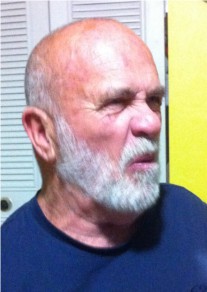
The Grizzled Ol’ Coach, Mike Morris.
We will address all of that with our opinions backed up by screenshots and videos, but for today it is a good idea to start with two examples of the progress on defense that we all can see immediately from the Oregon Spring Game in the “little details.”
Defense, by nature, is harder for people to understand because they have to know defensive concepts and techniques (hardly anyone does) and they can’t really see these little details in real-time at the game. It has to come from slow-motion review of plays and that is laborious for all.
But GOC and I will shorten your time learning by about seven hours for each analysis article. (I take that back … it takes me seven hours to learn and write it up, while Mike Morris not only knows it, but it is in his DNA.)
Most fans do not understand the importance of the smallest of details on the football field, such as hand placement, movement of hips, eye discipline and even what shoulder to attack. Last fall, I showed how an Oregon linebacker taking on the wrong shoulder either meant a Tackle-for-Loss, or a touchdown by the hated Huskies; thus, attacking the correct shoulder of the blocker is crucial for a linebacker to master.
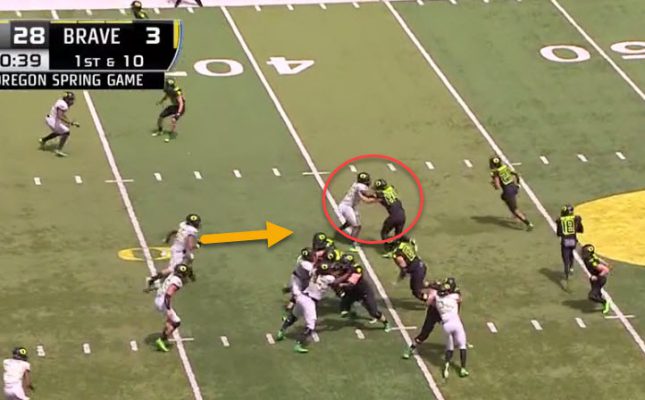
A big play or not depends on the correct shoulder …
I have mentioned often how the Jet Sweep is an important part of the new Oregon arsenal of weapons, and it is a play that other opponents, such as the Beavers, like to run as well. During the Oregon Spring Game, we noted a Jet Sweep featuring Charles Nelson, No. 18 (above) in the beginning stages. Inside the red circle is Bryson Young, No. 56 at linebacker, who is the contain defender for the perimeter.
Note how Bryson (above) is correctly attacking the outside shoulder and keeping his own shoulders square to the line of scrimmage and thus is beginning to change the running trajectory of the RB already. Young has complete confidence in fully committing to defending the defense’s flank because he knows that the MIKE, or middle linebacker, A.J. Hotchkins, has the gap inside of him. (Hotchkins is the yellow arrow above.)
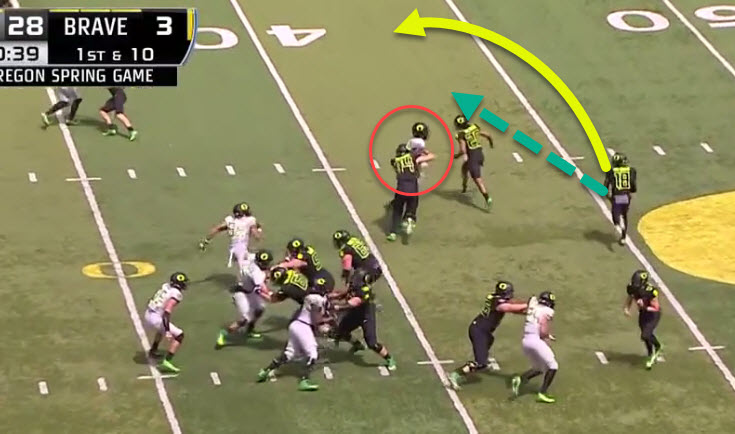
Young changed this play!
Young (above in red circle) has beaten his block and has already pushed the running path from the green dotted arrow, above, to the solid yellow arrow. By stringing this out, he buys time for additional defenders to help clean-up the play.
Sure enough, Arrion Springs (above) identifies the play as well, beats his block and makes the final push out-of-bounds of Nelson to crush the Jet Sweep. The difference between a big play for the offense and a tackle-for-loss? The linebacker attacking the correct shoulder and maintaining proper technique to defeat the block. It seems pretty small, but these details mean everything to a defense!
Coach Morris has told me often how correct technique by the defense is important, but often the mistakes on offense in blocking technique assists the defense and contributes to a bad play. Let’s look at an example below …
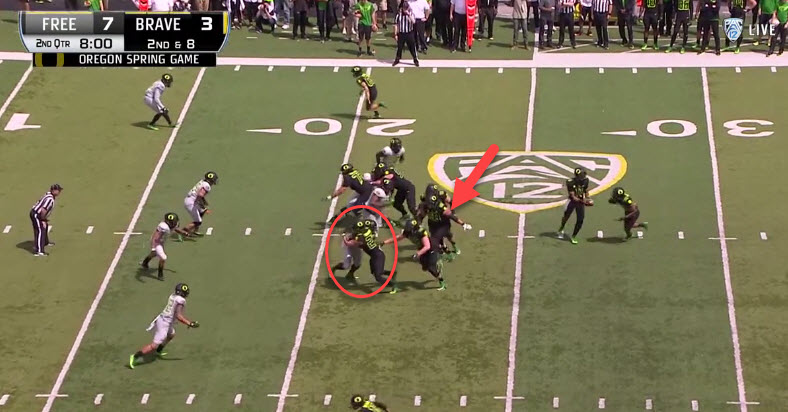
Great defensive technique and bad blocking = a busted play.
The play above is a Sweep out of the Pistol formation with three pulling offensive linemen (red arrow above) and we will want to note three defenders above, as well. The first to note is Jonah Moi, No. 42, who is the closest to the bottom left of the defenders in light uniforms. He is the outside linebacker in charge of containing the perimeter, what some coaches call the Force defender. His job is to attack the leading blocker with his left arm (his inside arm) staying square to the LOS, and keeping his right arm free, turning everything back to the inside.
The red circle is what makes-or-breaks this play, as Elijah George, No. 74, is being blocked (lamely) by Tight End No. 27, Jacob Breeland. George knows he has help from the OLB to the outside, so he maintains his gap integrity inside. Breeland should have blocked the hell out of him and sealed him to the inside, and what he does is … inadequate. (Note that I have talked up Breeland in prior articles, as he is a superb pass-receiving TE, but to make the next level he has to improve his blocking.)

The play is doomed already …
Breeland’s poor block opened up pursuit lanes for the defenders, and you can see Hotchkins (green arrow) drawing a bead into a lane behind Elijah to help plug the gap. Hotchkins, (the player of the game according to the Grizzled Ol’ Coach) wants to go inside-out and upfield as fast as possible and needs to keep the ball carrier inside-out of him. See how he finds the alley? That is what makes a linebacker … (Last year, he and others could not find those alleys, the lanes to run through for tackling the RB.)
George (red arrow above) is about to mess up two blockers at once (that were targeting Hotchkins) and set his teammates up for a sweet play. Moi (yellow arrow above) is in line for defending his perimeter as Breeland messes up the blocking path for the pulling guard, Shane Lemieux.
It all begins with a bad block, but unless the defenders follow their keys and stick to their assignments and employ great technique, the play can be successful regardless. In this case, it is a fine example of how the players on defense for Oregon are much improved in the small details that prevent a great play.
Normally, three pulling linemen would strike fear into the hearts of perimeter contain linebackers such as Moi, but the play of his teammates and the correct technique by all three made a great defensive play for Leavitt’s emerging defense.
My thanks again to Coach Mike Morris for teaching me and the readers the basics of defense.
“Oh, how we love to learn about our beloved defensive Ducks!”
Charles Fischer (FishDuck)
Eugene, Oregon
Top Photo from Pac-12 Network Video

Charles Fischer has been an intense fan of the Ducks, a season ticket holder at Autzen Stadium for 38 years and has written reports on football boards for over 26 years. Known as “FishDuck” on those boards, he is acknowledged for providing intense detail in his scrimmage reports, and in his Xs and Os play analyses. He is single, has a daughter Christine, and resides in Eugene Oregon where he was a Financial Advisor for 36 years.
He now focuses full-time on Charitable Planned Giving Workshops for churches and non-profit organizations in addition to managing his two Oregon Football Websites, of FishDuck.com and the Our Beloved Ducks forum. He is a busy man!
He does not profess to be a coach or analyst, but simply a “hack” that enjoys sharing what he has learned and invites others to correct or add to this body of Oregon Football! See More…

